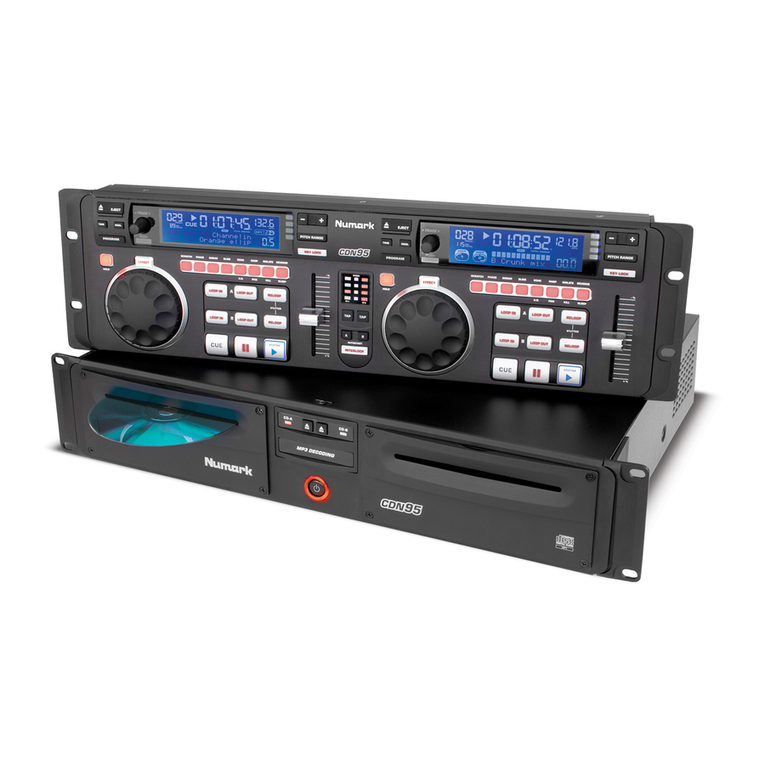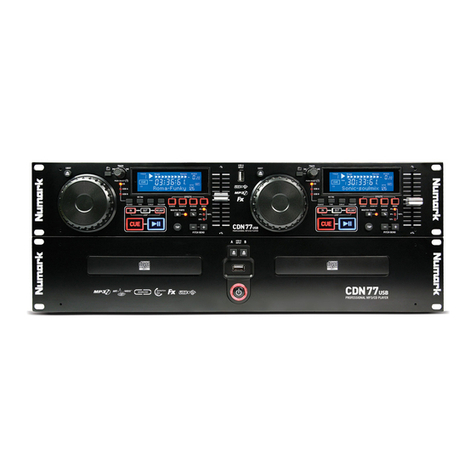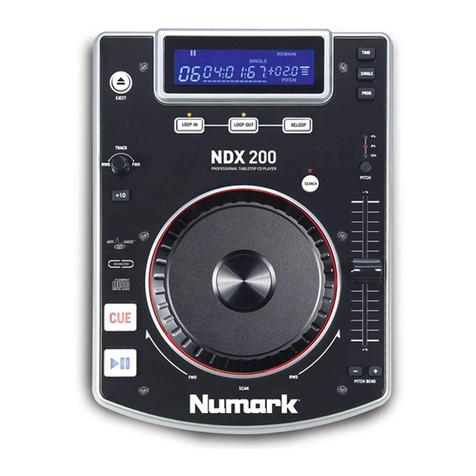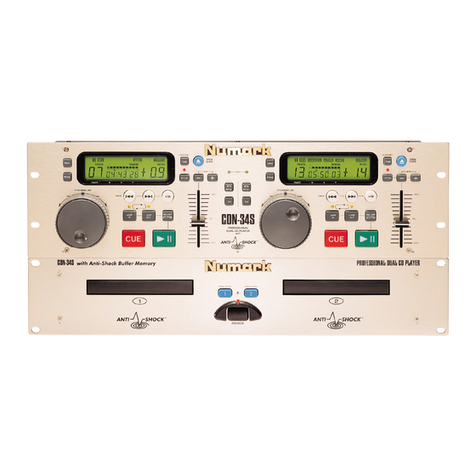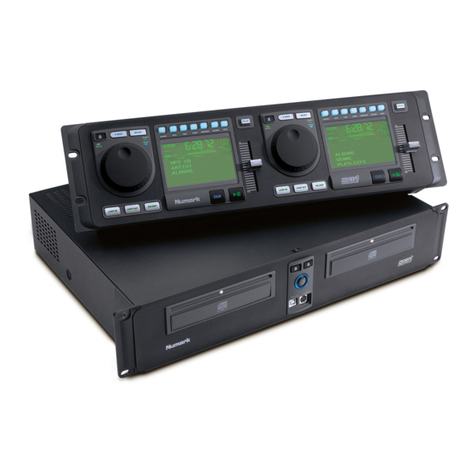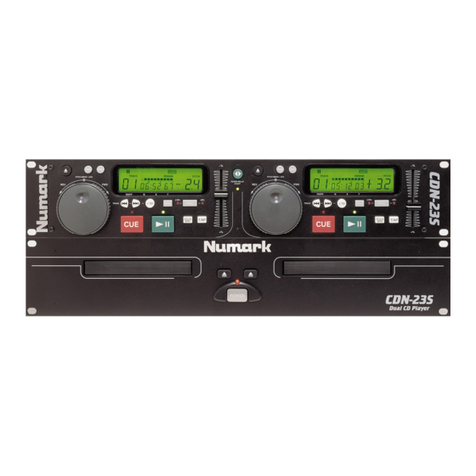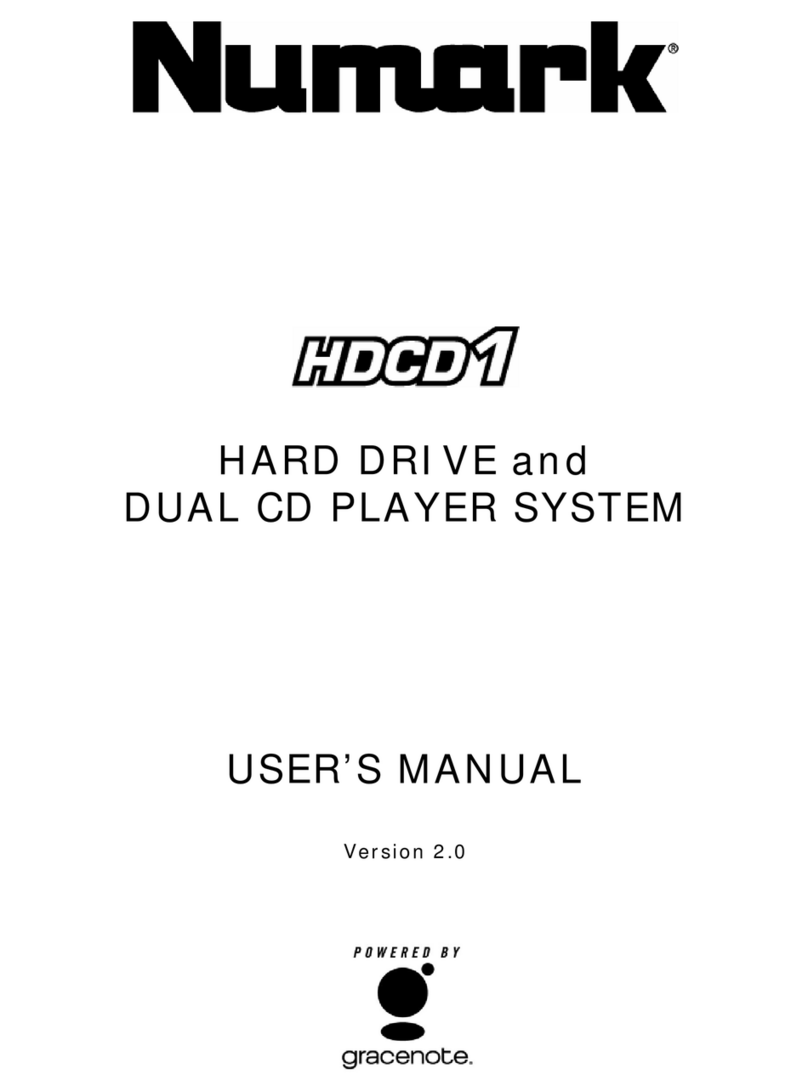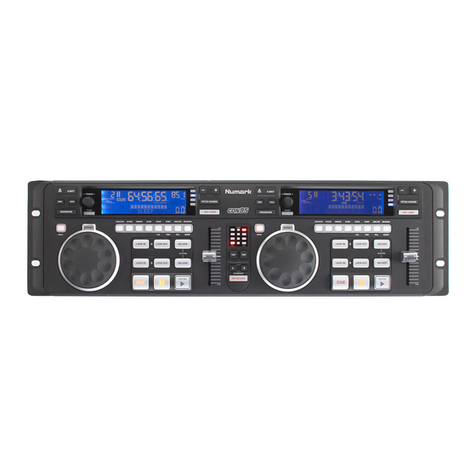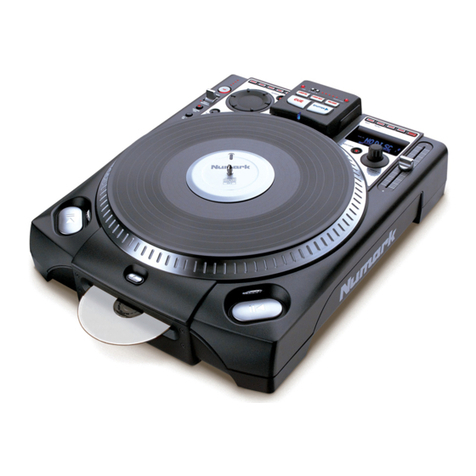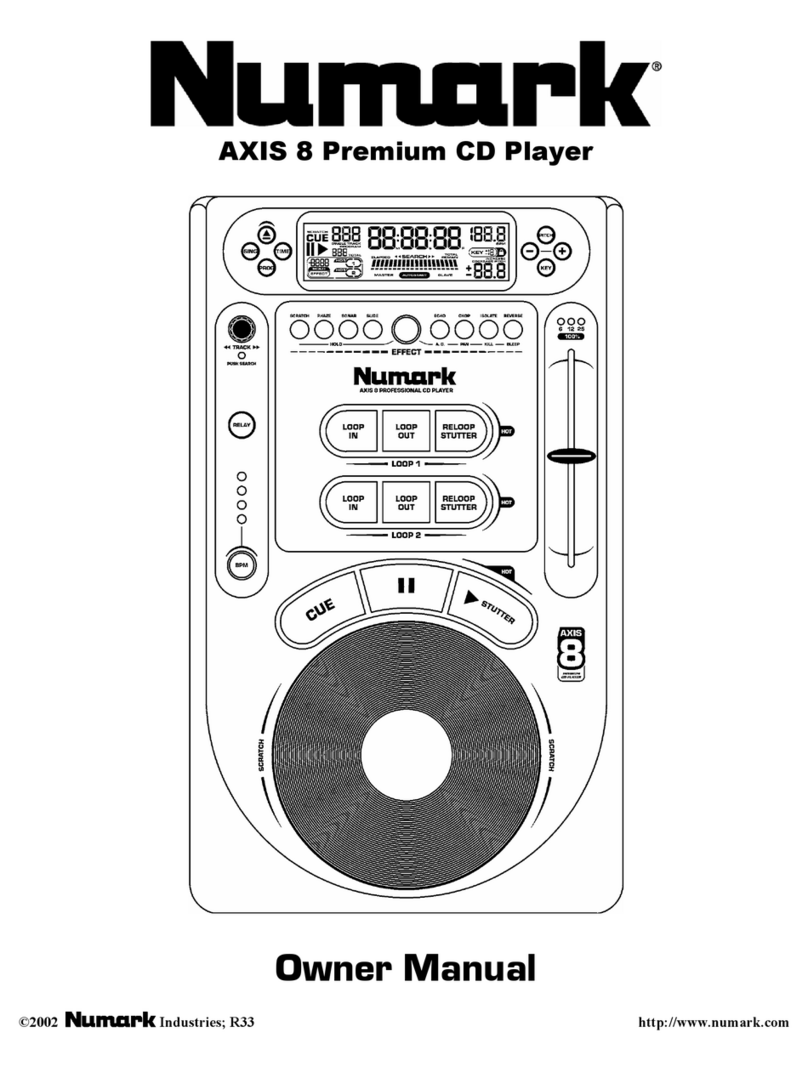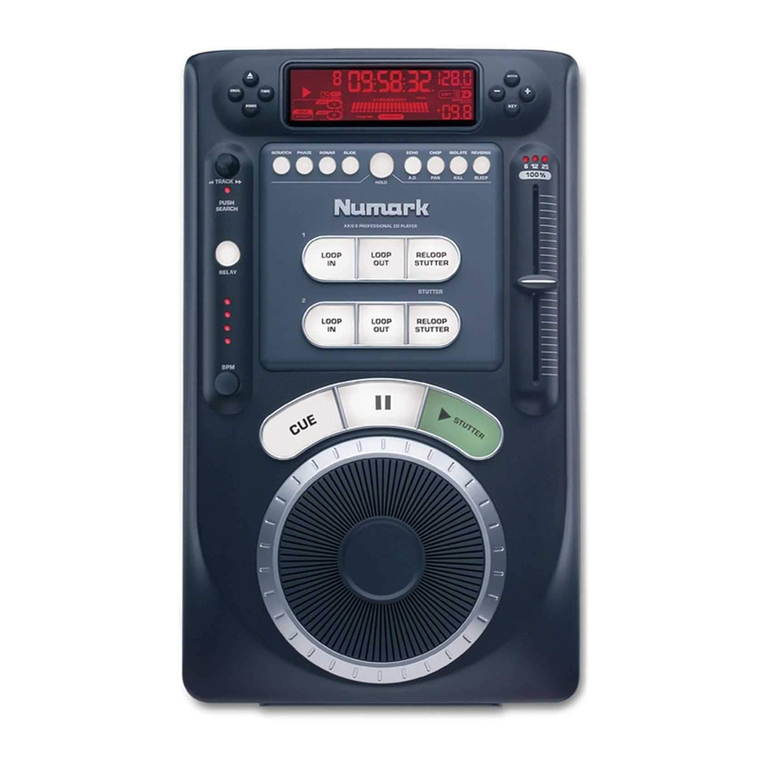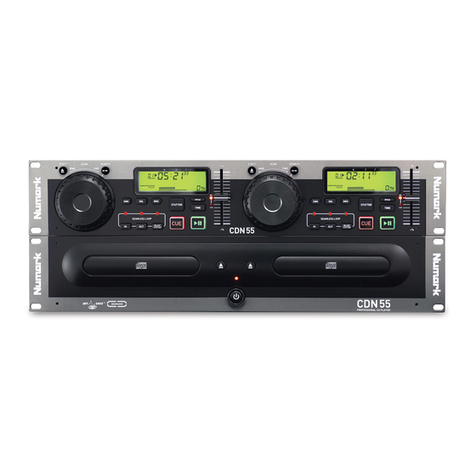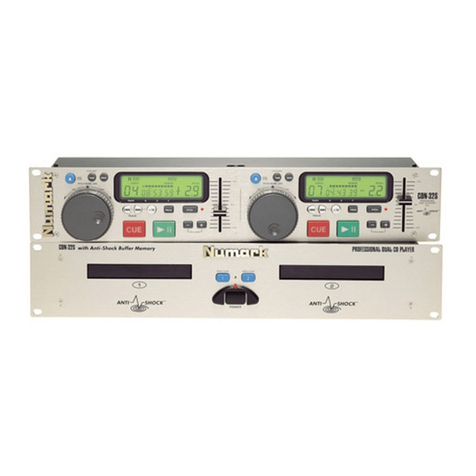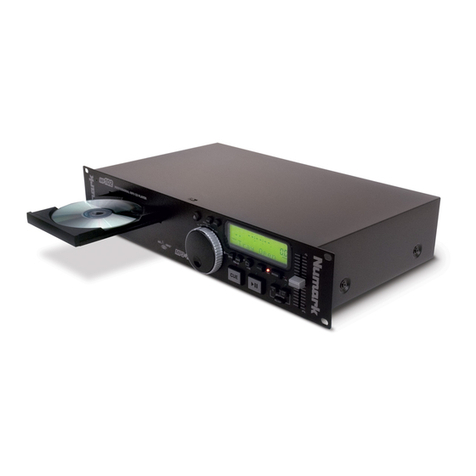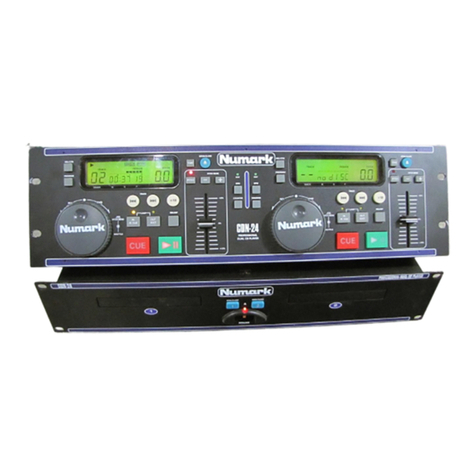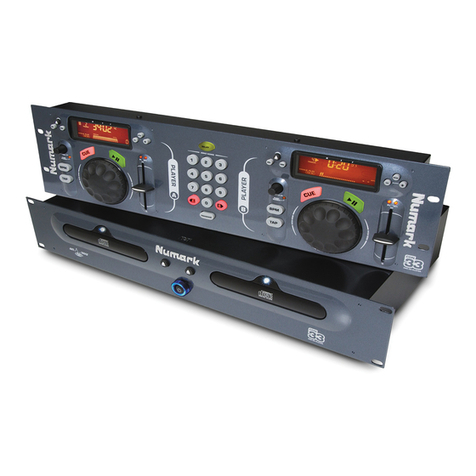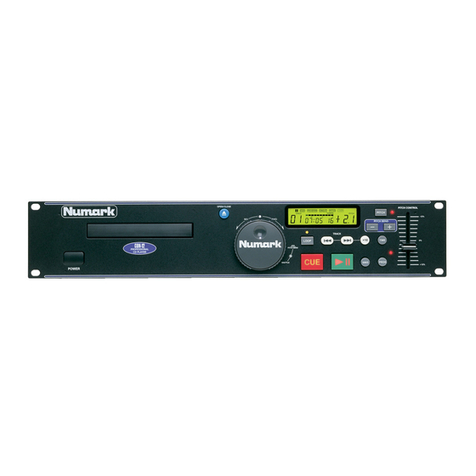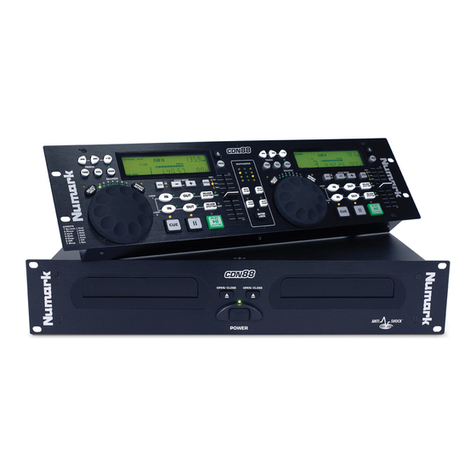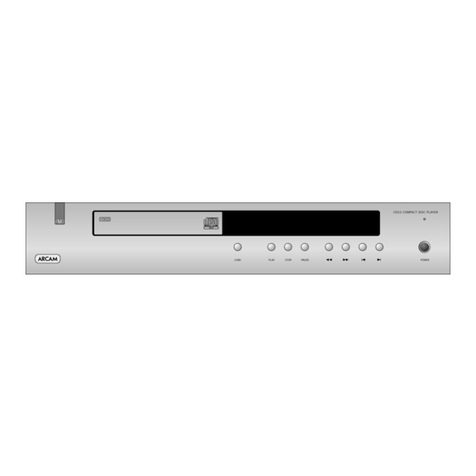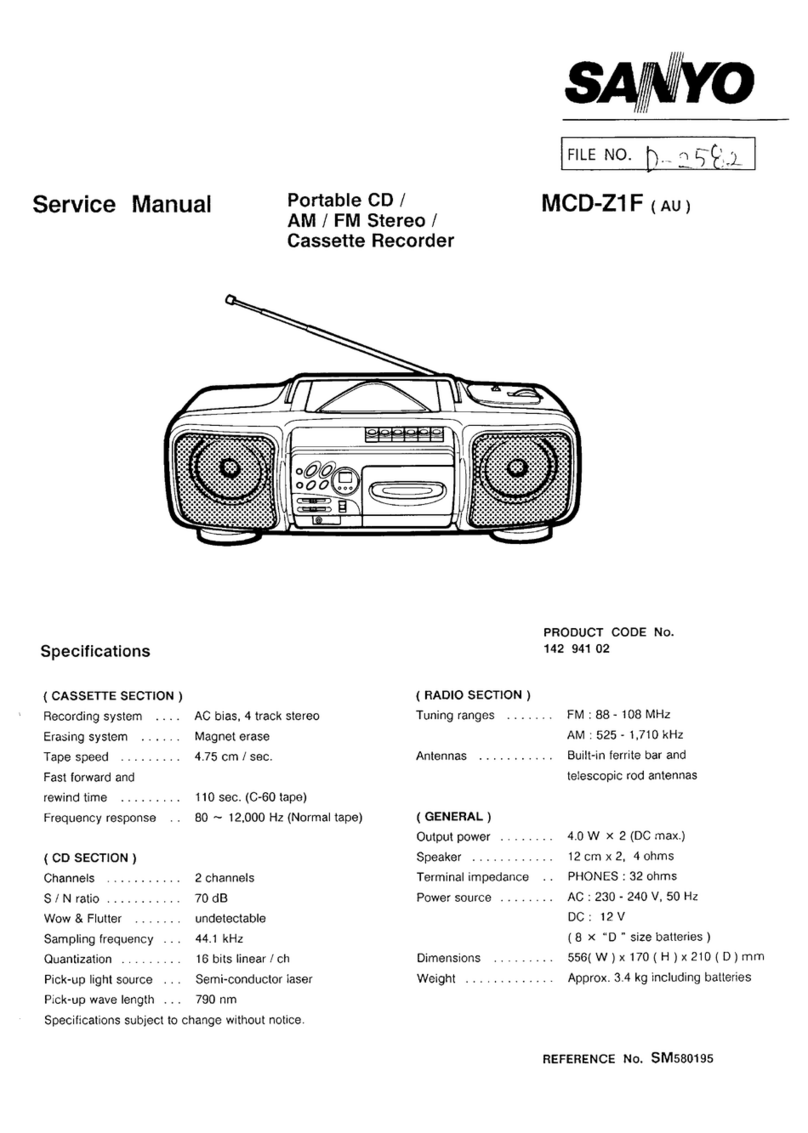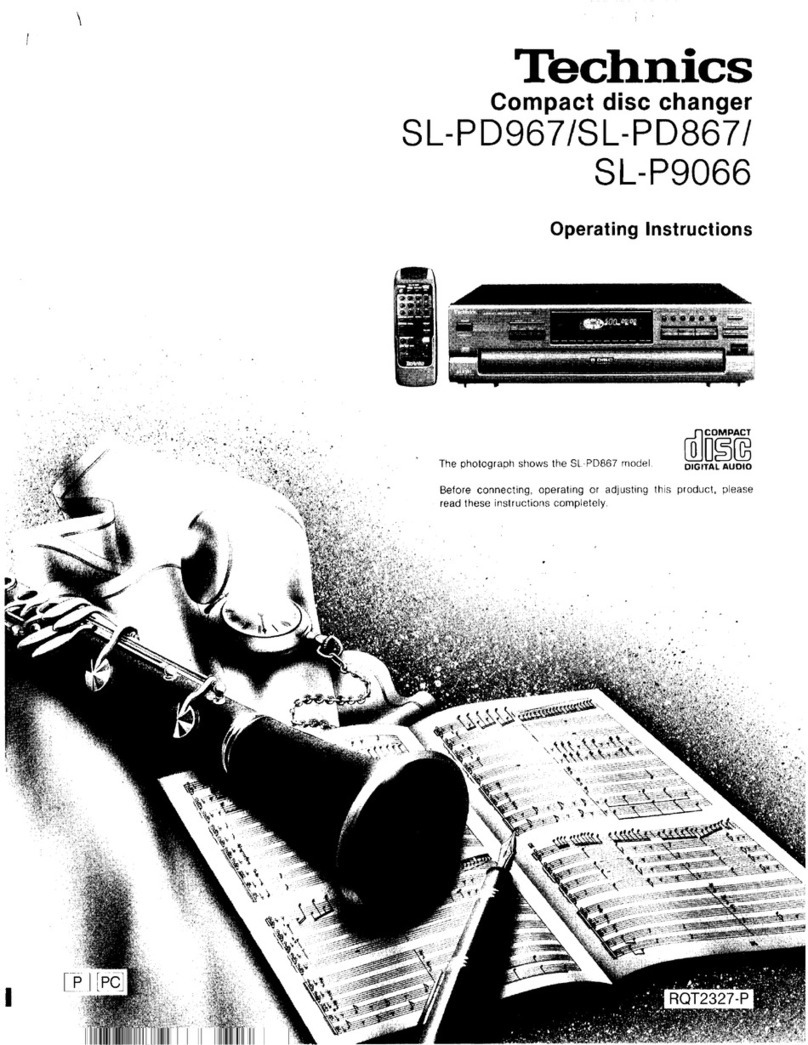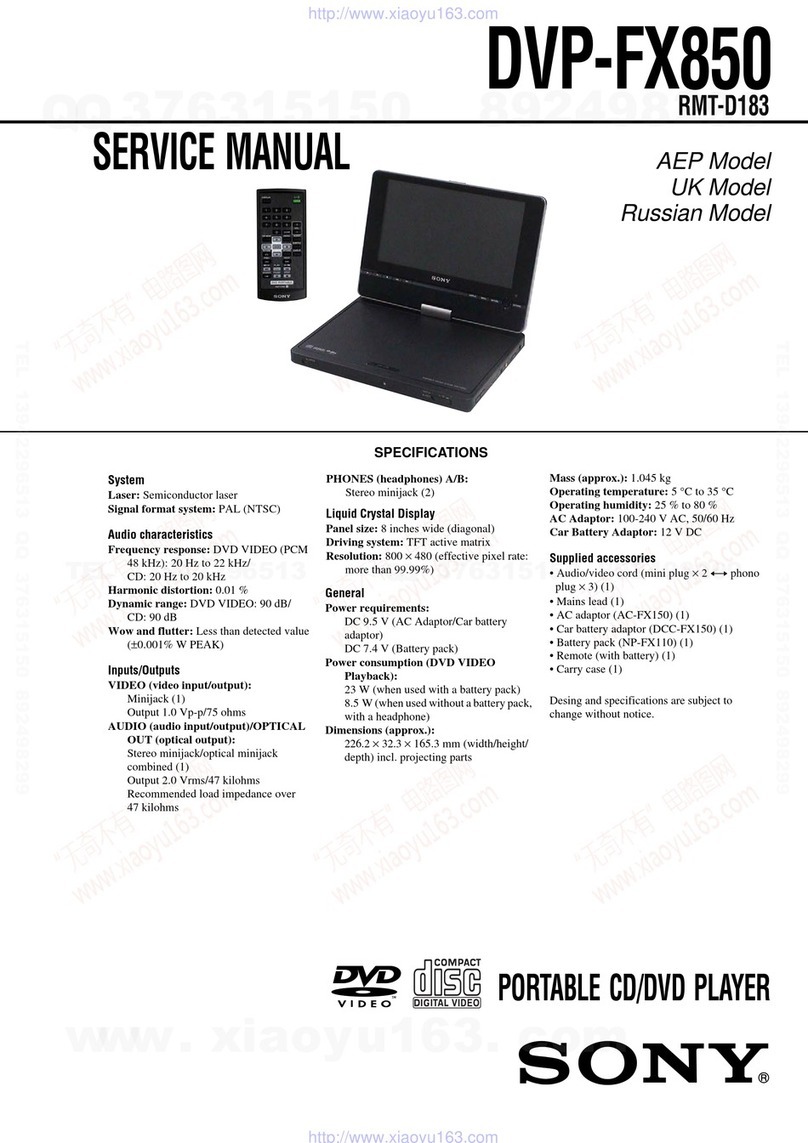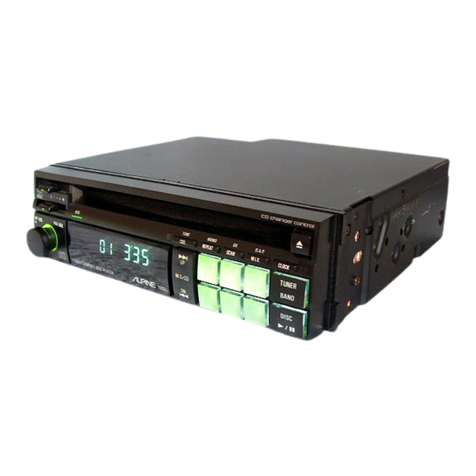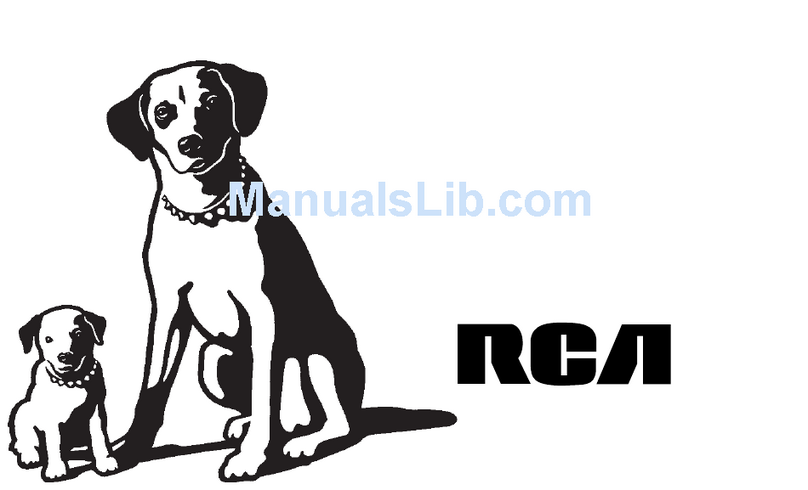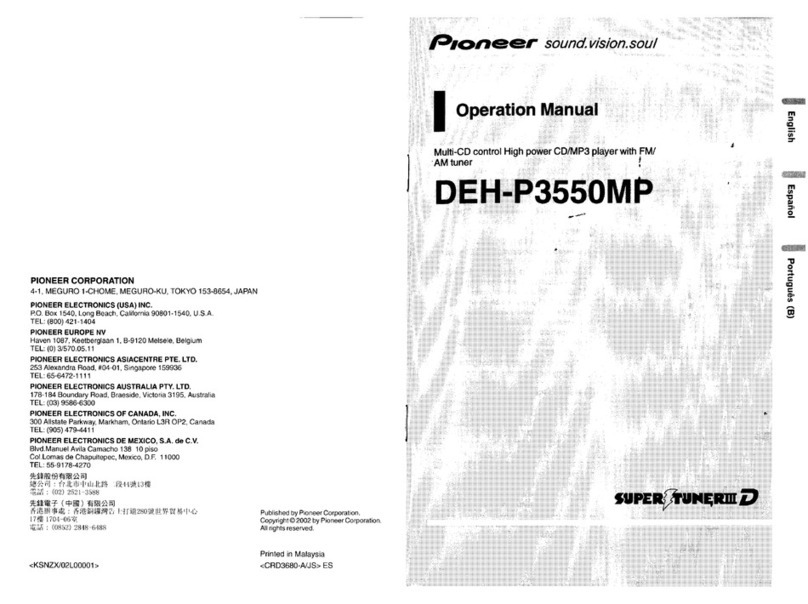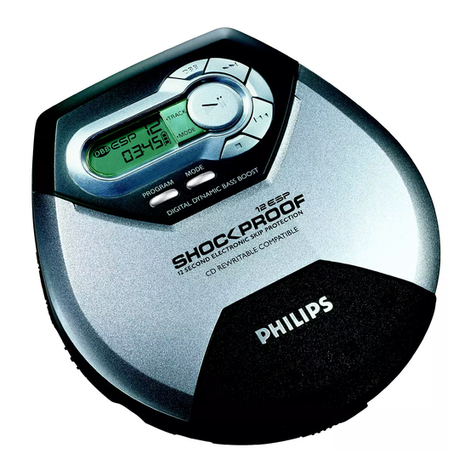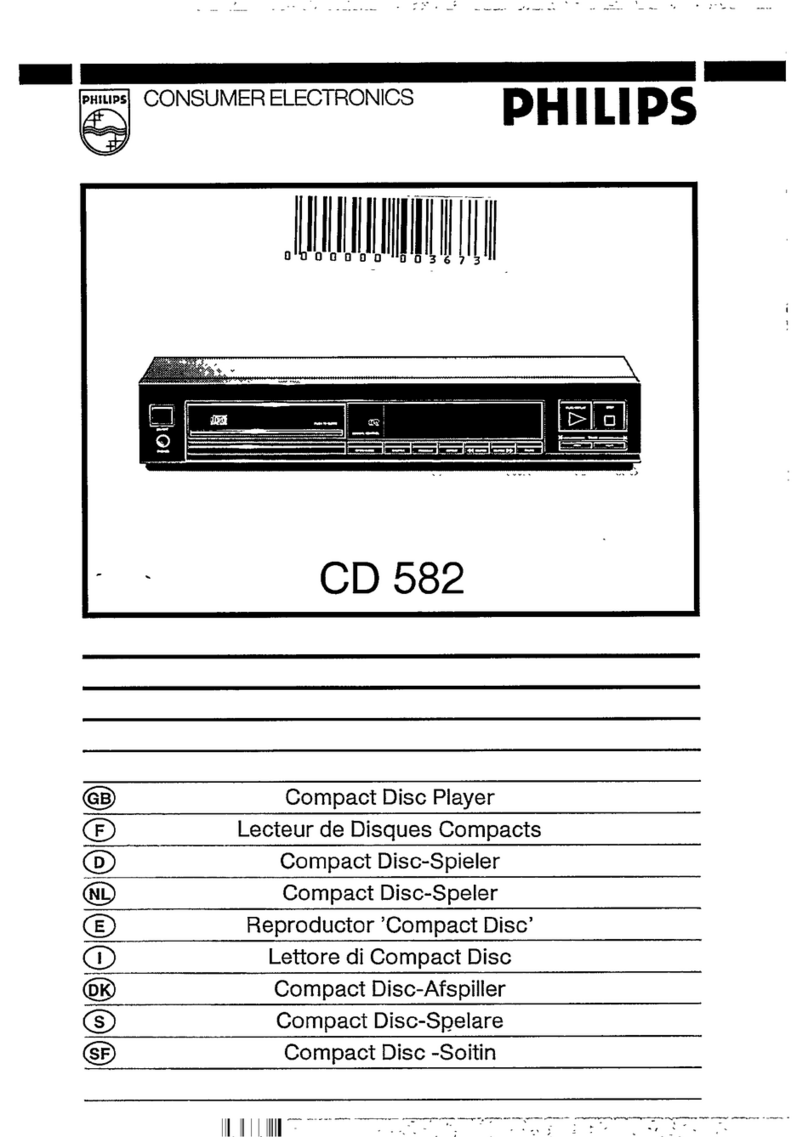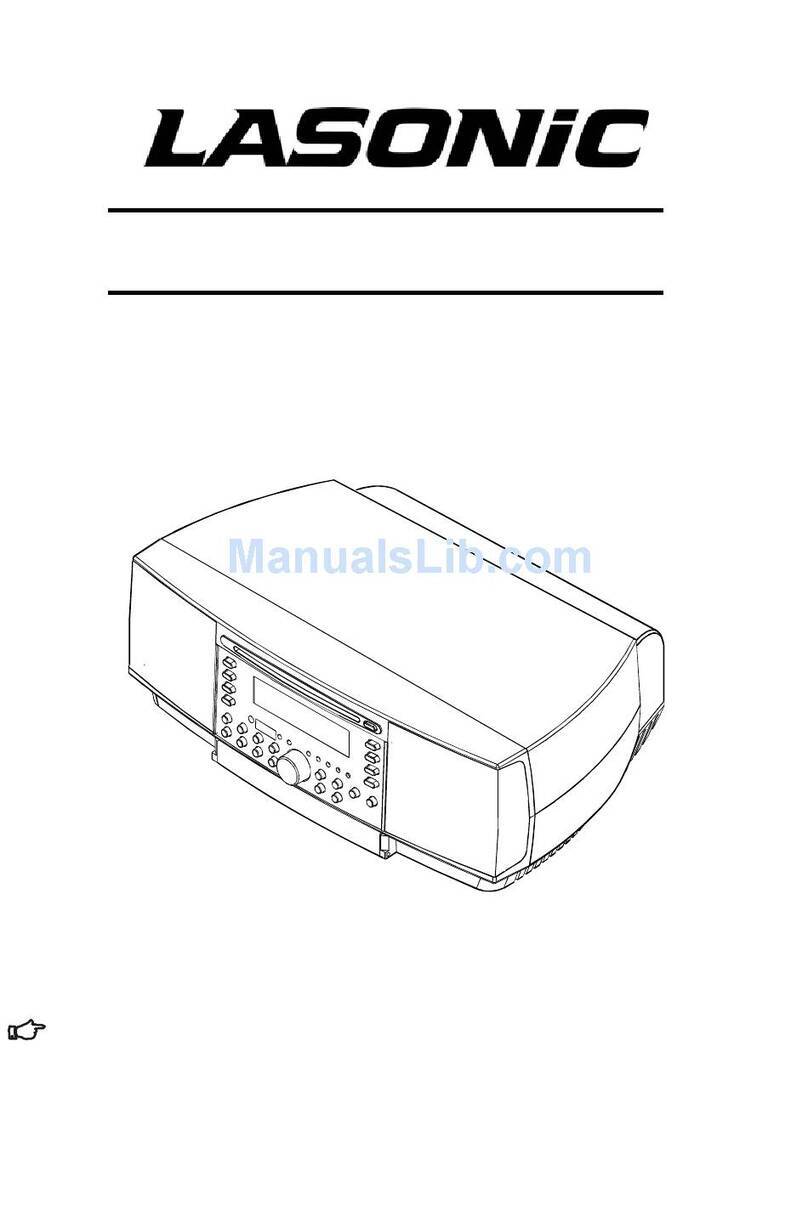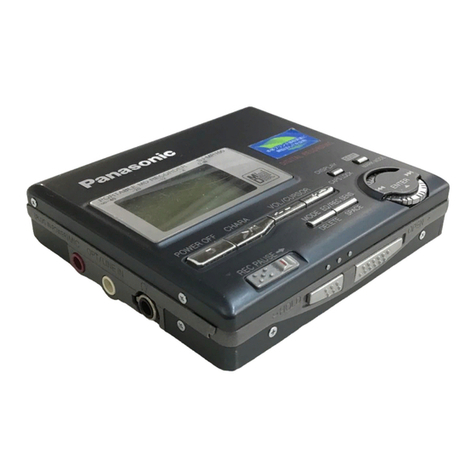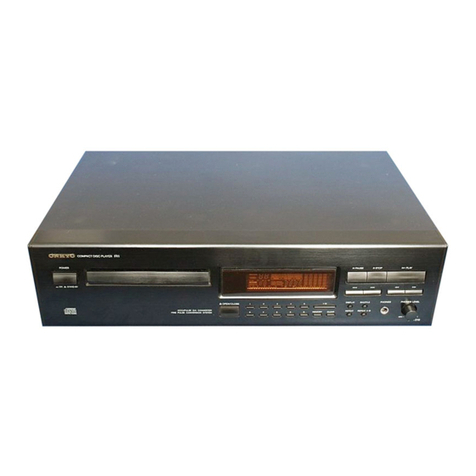
CDN-34
12. Internal/External Voltage Selectors - Internal or
external voltage selector switches, if any, should only
be reset and re-equipped with a proper plug for
alternative voltage by a qualified service technician.
Do not attempt to alter this yourself.
WARNING: To reduce the risk of fire or electric
shock, do not expose this appliance to rain or
moisture. Electrical equipment should NEVER be kept
or stored in damp environments.
DANGER INVISIBLE LASER RADIATION WHEN OPEN AND
INTERLOCK FAILED OR DEFEATED. AVOID DIRECT
EXPOSURE TO BEAM.
CAUTION: This product utilizes a laser. Use of
controls or adjustments other than those
specified herein may result in hazardous
radiation exposure.
SERVICE INSTRUCTIONS
1. Disconnect power cord before servicing
2. Replace critical components only with factory
parts or recommended equivalents
3. For AC line powered units - Before returning repaired
unit to user, use an ohmmeter to measure from both AC
plug blades to all exposed metallic parts. The resistance
should be no more than 100,000ohms.
NOTICE CONCERNING FCC REGULATIONS
This equipment generates and uses radio frequency
energy and may cause interference to radio and
television reception if you do not operate it in strict
accordance with the procedures detailed in this
OPERATING MANUAL.
This unit complies with Class B computing device
rules in accordance with the specifications in Sub-part
J or Part 15 of the FCC Rules, which are designed to
provide reasonable protection against such
interference in a residential installation. There is no
guarantee, however, that interference will not occur in
a particular installation. If the unit does cause
interference to any radio or television reception, try to
reduce it by one or more of the following means:
a) Turn the other unit and/or its antennae
b) Move this unit
c) Move this unit and the other unit(s) further
apart
d) Plug this unit into a different AC outlet so
that it is on a different circuit from the other
equipment.
This note is in accordance with Section 15.838 of the FCC Rules.
This unit does not exceed the Class B limits for radio
noise emission from digital apparatus set out in the
radio interference regulations of the Canadian
Department of Communications.
DOUBLE INSULATED - When servicing use only identical replacement parts
For 220 volt use in USA, use NEMA style 220 volt plug. For other countries use proper plug for local outlet.
LINE VOLTAGE SELECTION
1. The desired voltage may be set with the VOLTAGE SELECTOR switch
on the rear panel of the main unit, using a screw driver.
115V
230V
2. Do not twist the VOLTAGE SELECTOR switch with excessive force as this may cause damage.
3. If the VOLTAGE SELECTOR switch does not move smoothly contact a qualified serviceman.
Please record the serial number of your unit as shown on the back of the chassis as well as the name of
the dealer from whom you purchased the unit. Retain this information for your records. Please return the
warranty card enclosed to register your CD player with us.
MODEL: CDN-34 PURCHASED FROM:_________________________
SERIAL NUMBER:__________________ DATE OF PURCHASE:________________________
- The Leader in DJ Technology
©1999 Industries 3 http://www.numark.com
